The Hubble Space Telescope: Transforming Our View of Space
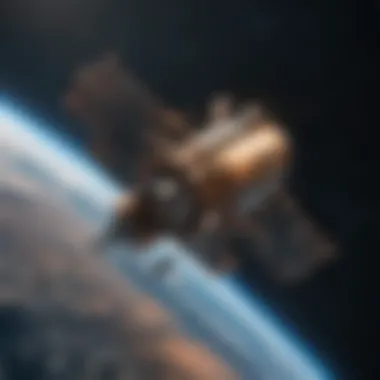
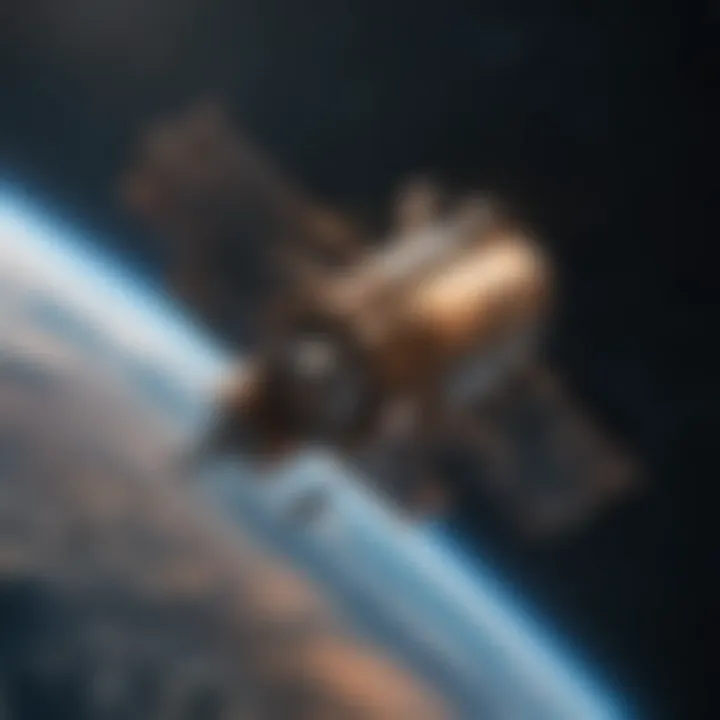
Intro
The Hubble Space Telescope, launched in 1990, is not just a piece of equipment floating in orbit; it’s a monumental leap in human understanding of the cosmos. Over the past few decades, it has captured stunning images of galaxies, nebulae, and other celestial phenomena that were previously invisible to us. Hubble's insights have opened new windows into astrophysics, challenging and refining our existing theories about the universe.
What sets Hubble apart is its placement above Earth’s atmosphere, allowing it to avoid atmospheric blurring and capture sharpe images. This position has enabled Hubble to observe distant cosmic objects in incredible detail, revolutionizing our grasp on space.
In the sections that follow, we will explore some of the recent advances made by Hubble, taking a closer look at the latest discoveries and technological innovations that continue to enhance its capabilities. We will also delve into the methodologies employed in Hubble’s research, outlining how the telescope collects data and the design behind its observatory.
The narrative will lead us to a deep appreciation of Hubble’s contributions to astronomy, showcasing how it has not only reshaped our knowledge but also set the foundation for future space exploration endeavors.
Preface to the Hubble Space Telescope
The Hubble Space Telescope represents a significant milestone in our journey to understand the universe. Launched in 1990, it has been the cornerstone of modern astronomy, providing astronomers and the general public alike with breathtaking images and valuable scientific data. The Hubble's contribution to space observation cannot be overstated, as it has opened a window into the cosmic realm, allowing us to observe distant galaxies, star formation, and the very fabric of the universe itself.
Hubble is not merely a telescope; it's a scientific powerhouse. Its unique position outside Earth's atmosphere means it captures light without interference from atmospheric distortion, offering unparalleled clarity and precision. Throughout its operational years, Hubble has become an essential tool for scientists around the globe, providing insights that align with both physical laws and philosophical inquiries about our existence.
The Origins of the Hubble Project
The genesis of the Hubble Space Telescope traces back to the late 1940s, when astronomers first proposed the idea of a space-based observatory. The desire to eliminate atmospheric disturbances drove the concept forward. However, it wasn't until the early 1970s that NASA took substantial steps to make Hubble a reality. A long and detailed process of design, funding, and development followed, reflecting the complexities of such an ambitious scientific project.
The telescope was named after Edwin Hubble, whose discovery regarding the expanding universe fundamentally altered our understanding of cosmology. This naming pays homage to a legacy of astronomical breakthroughs, as Hubble not only brought the universe into sharper focus but also propelled ambitious exploration into its unknown depths.
Key Features and Specifications
The Hubble Space Telescope boasts multiple essential features that have cemented its status as a leading astronomical instrument.
Dimensions and Weight
The dimensions and weight of Hubble are crucial to its operation. Measuring 13.3 meters in length and 4.2 meters in width, it’s compact enough to fit in the payload bay of a Space Shuttle but powerful enough to deliver high-resolution images of distant cosmic phenomena. Weighing approximately 11,000 kilograms, Hubble is sturdy yet manageable in space, a balance vital for its stability and operation. This size allows for the installation of various instruments and components without compromising its ability to maneuver.
The telescope's relatively small size for a space-based observatory allows for efficient transportation and deployment, a fact that can’t be overlooked in its development story. Its weight, while significant, reflects the engineering excellence behind creating an instrument capable of high-quality observations.
Instrumentation
Instrumentation is the heartbeat of Hubble's success. Fitted with a range of sophisticated cameras and spectrographs, Hubble can observe various wavelengths of light, extending from ultraviolet to near-infrared. This capability enhances its scientific versatility, allowing it to probe different aspects of celestial objects.
One standout is the Wide Field Camera 3, which has pushed the boundaries of what Hubble can achieve. It provides stunning clarity and depth in images, enabling researchers to study the relationships between galaxies, stars, and other celestial phenomena in unprecedented detail. Hence, this instrumentation renders the Hubble pivotal for modern astrophysics, revealing secrets of the universe that were previously beyond our grasp.
Orbit and Positioning
Hubble's orbit and positioning are exemplary features in its design. Orbiting the Earth at an altitude of approximately 547 kilometers, it sits above the bulk of the atmosphere, ensuring minimal distortion of its observations. This stable position enables Hubble to conduct prolonged imaging sessions, resulting in clarity that ground-based telescopes simply cannot match.
The telescope's specific position also facilitates regular servicing missions, allowing astronauts to upgrade its systems and instruments over the years. Such planned interventions have ensured that Hubble remains on the cutting edge of astronomical technology, a testament to the foresight of its initial designers and operators.
The Hubble Space Telescope has not just transformed how we see the universe; it has also inspired countless individuals, igniting a passion for science and exploration that transcends generations.
The Hubble's Launch and Deployment
The launch and deployment of the Hubble Space Telescope is a tale marked by rigorous preparations and ambitious aspirations. This segment of Hubble’s history lays the groundwork for its transformative journey into the cosmos. Understanding these early stages is vital as they set the stage for the telescope's operational success and scientific achievements.
Launch History
Preparation for Launch
The preparation for Hubble's launch was a meticulous process, requiring coordinated efforts from scientists, engineers, and space agencies. Delays and setbacks were plentiful, but each challenge was a lesson that contributed to its eventual success. A key aspect of this preparation was the integration testing, where all systems were evaluated in tandem to ensure they worked seamlessly. Such thoroughness in the pre-launch phase reflects the importance of precision and planning in aerospace projects.
"Failures may be our greatest teachers. Each one pointed us towards improvement."
One notable feature of the preparation involved the use of a specialized payload bay in the Space Shuttle that accommodated Hubble’s large frame. This particular capability was crucial; any misstep here could have resulted in significant issues upon launch. It is a valuable focus for this article because it underscores the careful balance of engineering and practical constraints necessary for such a groundbreaking mission.
NASA's Space Shuttle Missions
NASA's Space Shuttle missions were pivotal in carrying Hubble into orbit. These missions were unique in their ability to transport large payloads and deploy them into various orbital paths, a characteristic that showcased not just the Shuttle's engineering prowess but also the vision behind Hubble's construction. Each mission was interwoven with a broader narrative of exploration and discovery.
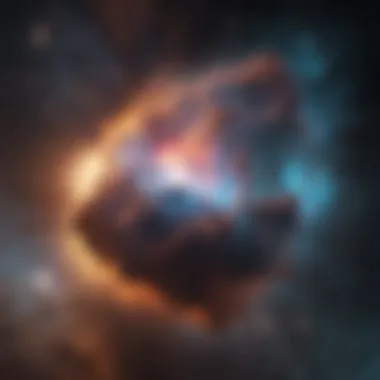
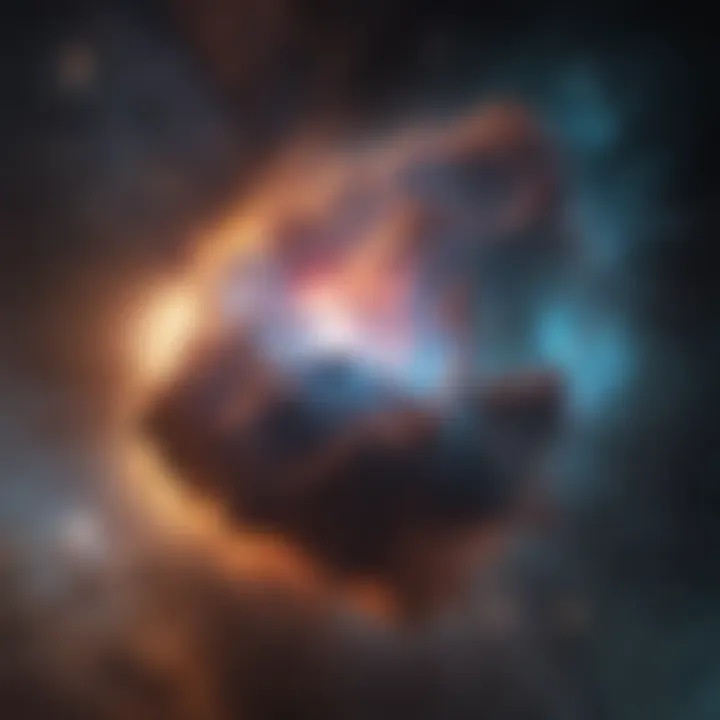
The selection of the Space Shuttle for Hubble's deployment was a strategic choice given its reusability, which opened the doors for servicing missions thereafter. This ongoing support system allowed Hubble to remain operational far beyond its initial expectations, presenting a significant advantage not only in extending its operational life but also in enhancing its capabilities over time.
Deployment Challenges
Initial Optical Aberration
Despite the careful planning, Hubble faced significant challenges soon after its deployment. The initial optical aberration, a flaw that compromised image clarity, was a major setback. This issue arose from a miscalibration during the lens manufacturing process. Such a mistake was a critical moment in Hubble's history, highlighting both the risks and rewards of groundbreaking exploration.
The key characteristic of this optical aberration was that it prompted immediate action from NASA; an ambitious endeavor became an urgent necessity. This incident serves as an insightful part of this article as it navigates the ongoing quest for precision in space instruments. Though initially problematic, this flaw led to innovative corrective measures that enhanced the telescope's capabilities.
Corrective Measures
The corrective measures taken in response to the optical aberration turned into a landmark moment for NASA. Servicing missions, specifically the first one in 1993, involved a detailed and complex operation to fit corrective optics to Hubble. This served as a testament to the ingenuity and adaptability of the engineering teams involved.
The corrective feature of adjusting a space telescope while in orbit is no small feat; it showcases the remarkable ability of human innovation and the importance placed on problem-solving. Painting a picture of the ingenuity required here adds depth to the narrative of Hubble, showing how setbacks can lead to enhanced technological capabilities and more profound discoveries.
This exploration of the launch and deployment challenges paints a vivid picture of Hubble's formative moments. Each phase—whether it be preparation, mission execution, or addressing unforeseen obstacles—contributes profoundly to the overall legacy of the Hubble Space Telescope.
Operating the Hubble Space Telescope
Operating the Hubble Space Telescope is an intricate dance of technology, communication, and scientific inquiry. This area of focus highlights how the Hubble operates in space, overcoming challenges faced by scientists and engineers. The significance behind operating Hubble trails into many facets: from remote command to the crunching of vast data sets. Understanding these elements offers insight into the telescope's ongoing contributions to our knowledge of the universe.
Command and Control
Remote Operations
Remote operations refer to the ability to control the Hubble Space Telescope from millions of miles away, on solid ground. This approach is vital due to the telescope's location in low Earth orbit, where astronauts can't easily intervene. The key characteristic of remote operations is its reliance on advanced software and communication technologies that ensure precision.
One might think of it as orchestrating a symphony from afar, where every note must align perfectly. This method is beneficial since it's not just about making the telescope point at a star; it means adjusting parameters based on real-time input from observations. Hubble can be told to change its focus, switch instruments, or rotate to a different angle based on findings, a feature that enhances its observational capabilities.
However, a potential disadvantage lies in the complexity of the systems involved. Any malfunction in communication or software could lead to missed opportunities. The margin for error is minimal in these operations, emphasizing the need for reliability in the technology anchoring Hubble’s mission.
Data Retrieval and Processing
Data retrieval and processing is a linchpin in Hubble's operational framework. Every image captured by Hubble undergoes a meticulous process of digitization and storage before being sent back to Earth. Hubble acts as both a camera and a sensor, collecting information across the electromagnetic spectrum. What sets this process apart is the ability to handle massive quantities of data — roughly 150 gigabytes each year from various observations.
A standout feature of data retrieval is its automatic quality check system. Before data is stored, it is analyzed for inconsistencies, ensuring that the finalized images are of the highest quality possible. This preventive measure helps maintain Hubble’s prestige among astronomers who rely on its discoveries.
On the flip side, the complexity of data processing might be daunting. The information is whittled down from raw data to usable images and findings. This could take time, but the payoff is vast: insights that often lead to groundbreaking discoveries in cosmology and astrophysics, a necessity for fuel in the realm of scientific knowledge.
Scientific Observations
Scientific observations conducted by Hubble lay the groundwork for answering complex questions about the universe. The ways Hubble schedules observations and selects targets undoubtedly influence its scientific output.
Observation Scheduling
Observation scheduling may seem straightforward but involves an elaborate approach to prioritize tasks. Each session must be finely tuned to ensure that the telescope can access optimal conditions for observation. The crux of scheduling lies in selecting the right moments when celestial objects are on the agenda at a suitable angle and brightness.
One notable feature is how scheduling integrates feedback loops from previous observations. This adaptability ensures a responsive approach, which is vital in the ever-changing landscape of space. Schedules are not set in stone; they can change based on new discoveries or unexpected celestial events, allowing Hubble to be at the forefront of astronomical research.
While this system is highly beneficial, it does have limitations. Not every target can be prioritized, leading to gaps in observations for less prominent celestial bodies. However, Hubble remains a powerful tool, capable of adapting swiftly to shifting scientific interests.
Target Selection Process
Target selection is an essential aspect of how Hubble operates scientifically. This process determines which astronomical phenomena are worth investigating, and that involves creativity and scientific rigor. Astrophysicists and astronomers work collaboratively to propose targets based on potential significance. Each target must demonstrate the possibility of new findings that can enhance or challenge existing theories.
The unique feature of this selection is the scientific review that each proposal undergoes. Peer reviews guarantee that only the most promising targets are chosen, ensuring Hubble's time and resources are well spent. By favoring observations that can yield significant contributions to our understanding of the universe, the telescope effectively places its observational focus where it can make a real difference.
Nonetheless, the criteria for selection can sometimes be a double-edged sword. While prioritizing significant findings ensures quality, it could limit the scope of discovery by disregarding less understood phenomena. Thus far, however, Hubble's track record stands testament to the merits of this careful and calculated approach, as evidenced by its wide-ranging discoveries that have fueled cosmic inquiry.
Scientific Contributions of Hubble
The Hubble Space Telescope stands as a beacon of enlightenment in the field of astronomy, providing invaluable contributions that have reshaped our views of the cosmos. This section dives into some remarkable discoveries it has made, as well as its far-reaching influence on cosmology. By understanding these contributions, one can appreciate the way Hubble has enhanced our knowledge and ignited curiosity about the universe.
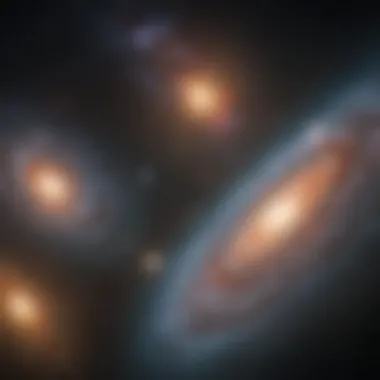
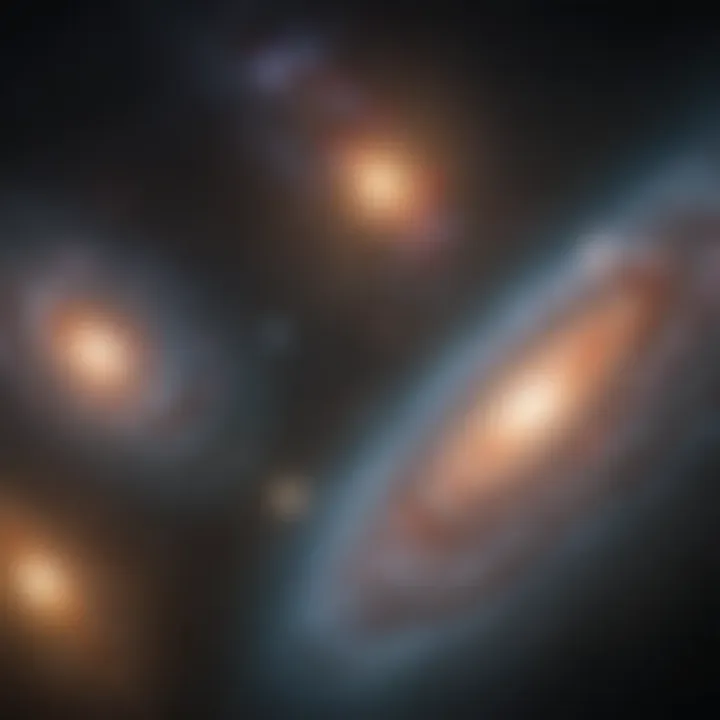
Key Discoveries in Astronomy
The Expanding Universe
The concept of an expanding universe is profound, to say the least. Before the data from Hubble, the notion of a static universe was the prevailing view. Hubble’s observations directly challenged this idea by providing compelling evidence that galaxies are, in fact, moving away from each other. This realisation helped establish the framework for the Big Bang theory, greatly influencing our understanding of cosmic evolution.
One of the key characteristics of this discovery is the relationship between distance and the velocity of galaxies. Hubble’s Law, derived from his data, effectively describes this correlation. It implies that the further a galaxy is, the faster it is receding from us. This fundamental principle has not only simplified how we perceive the universe but has also laid the groundwork for future cosmic research.
However, while the notion of an expanding universe is generally accepted, it does come with some complexities. For example, understanding the rate of this expansion involves considering factors like the gravitational pull from other celestial bodies, which can impact measurements significantly. Overall, Hubble's contribution in this area remains undeniably impactful, igniting discussions and avenues for further research.
Galaxies and Their Formation
Hubble has had a particularly pivotal role in understanding the makeup and evolution of galaxies. By capturing high-resolution images, it has unveiled the intricate structures and formations within galaxies that were previously hidden from view. The telescope's unique capabilities allow astronomers to study various types of galaxies and the processes that gave rise to them.
A key characteristic of Hubble's findings is the discovery of galactic diversity. Some galaxies are spiral-like, while others are elliptical or irregular, reflecting unique histories and conditions. By examining these differences, Hubble anthropologists have gained insights into how galaxies form and interact, paving the way for new theories about galaxy evolution.
One notable feature is Hubble’s ability to observe galaxies at different stages of their lifecycle. This capability allows researchers to connect dots between young and old galaxies, making sense of cosmic timelines. Despite these advancements, there are still gaps in understanding certain formations, highlighting the need for continual research. Still, the observations from Hubble remain instrumental in multi-faceted inquiries into our universe's architecture.
Influence on Cosmology
The Hubble Constant
The Hubble Constant represents a cornerstone in contemporary cosmology. It quantifies the rate of expansion of the universe, serving as a crucial metric for measuring distances to far-off galaxies. By providing reliable estimates, Hubble has enabled scientists to place a more accurate timeline on the cosmos.
A defining feature of the Hubble Constant is its role in linking different fields of astronomical study. Measurements from Hubble have allowed for the calibration of other distance measuring techniques, adding further accuracy to our understandings of cosmic distances. This makes the Hubble Constant a widely used, if occasionally debated, figure within the scientific community.
However, there are discrepancies observed in the measurements, which flame ongoing debates about the Constant's accuracy and implications. A deeper understanding of this variance may lead to finer adjustments in our cosmological models—something that Hubble has made feasible through its observations.
Dark Energy Insights
The concept of dark energy remains one of the biggest puzzles in modern cosmology, and Hubble's contributions have brought a bit more clarity to this conundrum. Its observations of distant supernovae showed that the universe's expansion is accelerating, suggesting the presence of a mysterious form of energy permeating space—dark energy.
The characteristic aspect of these insights is their ability to challenge existing theories. Just when it seemed like scientists were beginning grasp of cosmic behaviors, the dark energy revelation threw a wrench in the works, urging a reevaluation of previous notions regarding gravity and the large-scale structure of the universe.
The unique feature of dark energy insights derived from Hubble is how they provoke further investigation. While confirming its existence remains elusive, Hubble’s data signals strong indication that over 70% of the universe is occupied by dark energy. This realisation has opened up numerous inquiries into its properties and consequences, encouraging a multi-disciplinary approach to understand its implications better. But like all scientific inquiries, it presents both challenge and opportunity, showcasing Hubble’s enduring legacy in the quest for knowledge.
"The contributions of the Hubble Space Telescope have not just refined existing questions but have opened the door to entirely new ones, enriching our collective understanding of the universe."
Technological Innovations
The realm of space exploration is constantly evolving, but what sets the Hubble Space Telescope apart are its groundbreaking technological innovations. These advancements not only enable Hubble to capture stunning images of the universe but also to draw out intricate data that inform our understanding of cosmic phenomena. By employing sophisticated imaging techniques and specialized instrumentation, Hubble has pushed the boundaries of what humanity knows about the universe, making it a cornerstone of astronomical research.
Advanced Imaging Techniques
Wide Field Camera
The Wide Field Camera is one of Hubble’s standout instruments that significantly amplifies its observational capabilities. This camera enables the telescope to capture vast fields of view at once, allowing scientists to gather more information with each observation. A particularly notable aspect of this camera is its ability to operate across multiple wavelengths, which broadens the spectrum of light Hubble can utilize for observations.
This multi-wavelength capability is a game changer; it means that researchers can study not just visible light but also ultraviolet and near-infrared light. The versatility of the Wide Field Camera offers substantial benefits in the exploration of various celestial phenomena. For instance, it excels at imaging distant galaxies and nebulae, revealing structures and compositions that are crucial to our understanding of the cosmos. One unique feature is its adaptability to capture both deep-field images and highly detailed observations of nearby celestial objects, making it an invaluable tool.
However, the Wide Field Camera does have its downsides, primarily regarding the extensive data processing required. High-resolution images generate vast amounts of data that require careful handling and analysis. Yet, the scientific rewards it brings far outweigh these challenges.
Space Telescope Imaging Spectrograph
The Space Telescope Imaging Spectrograph (STIS) is another critical instrument that has transformed our approach to astrophysical research. What sets STIS apart is its capability to dissect the light from astronomical objects, enabling detailed analysis of their physical properties, such as temperature, density, and composition. This instrument does not just take pictures; it analyzes the very light that reaches Hubble, providing insights into phenomena that would otherwise remain invisible to the naked eye.
A key characteristic of STIS is its ability to perform spectroscopy, effectively breaking down light into its constituent colors. This unique feature allows scientists to identify the elemental makeup of stars and galaxies, revealing the fundamental processes at play in the universe. The insights gained from such spectral analysis contribute significantly to our understanding of phenomena like star formation and the characteristics of exoplanets.
Nevertheless, like the Wide Field Camera, STIS is not without its challenges. The need for calibration can complicate the observational process, and sometimes, the faintness of target objects can limit its effectiveness. Yet, the profound discoveries made possible through STIS again underscore its importance in the expedition of astronomical science.
Instrumentation Upgrades
Servicing Missions
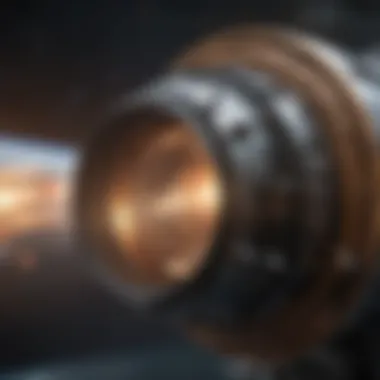
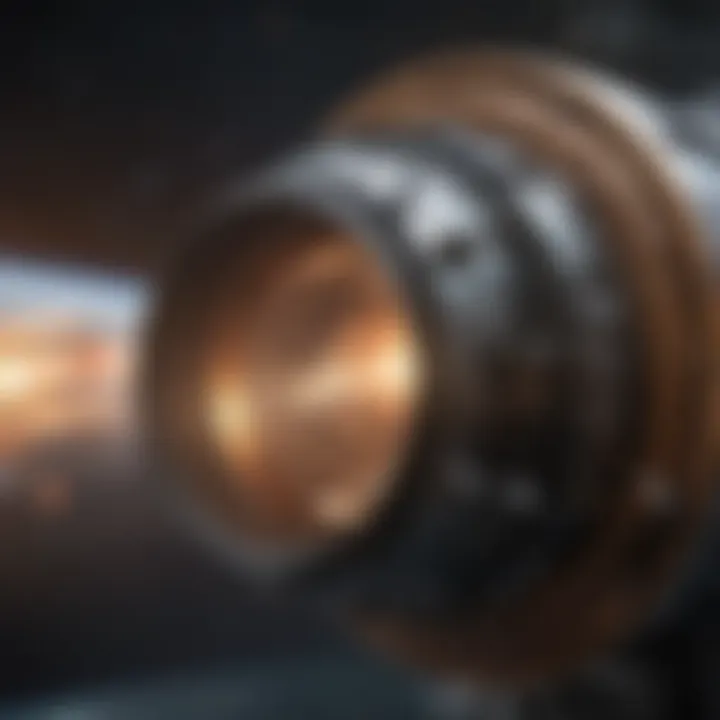
Servicing missions are perhaps one of the most fascinating elements of Hubble’s operational history. These missions involved astronauts traveling to Hubble to perform repairs and upgrades, ensuring the telescope remained at the forefront of scientific capability. The most noteworthy aspect is the human element; maintenance required specialized training and precision, which speaks volumes about human ingenuity in the quest for knowledge.
These missions have allowed replacement of worn-out parts and introduction of new instruments, like the Wide Field Camera 3. The collaborative effort between engineers, scientists, and astronauts has resulted in a robust upgrade process that adapts Hubble to the evolving needs of astronomy. However, servicing also introduces risks, especially considering the complexities involved in space travel. Still, the successes achieved during these missions are a testament to the commitment of the scientific community to preserving and enhancing this vital tool.
Latest Instruments
In the ever-evolving landscape of astrophysics, the introduction of the latest instruments aboard Hubble has provided fresh lenses through which to analyze the cosmos. These instruments, such as the Cosmic Origins Spectrograph, extend Hubble’s capabilities even further, allowing for nuanced observations of the distant universe.
The major contribution of these instruments is their ability to engage with more complex scientific inquiries. They can probe deeper into cosmic events and make connections that were previously beyond reach. A distinguishing feature of these latest instruments is their finely tuned sensitivity to faint light sources, which is crucial for studying distant galaxies and interstellar phenomena.
The downside is that more sophisticated instruments can sometimes require longer integration times, leading to more extended wait periods for collect data. However, as the quest for understanding space unfolds, the advantages borne from these advances in technology showcase a continual progression toward expanding the horizons of astronomical research.
The Hubble Space Telescope remains a beacon of innovation. With each upgrade and new instrument, it evolves—offering an unparalleled view into the mysteries of the universe, and pushing the boundaries of human knowledge into the great unknown.
As we look toward the future of space observation, the legacy of technological innovations tied to Hubble serves as a strong foundation for new explorations, setting the stage for discoveries yet to come.
Public Engagement and Legacy
The Hubble Space Telescope has long been more than just a scientific instrument; it serves as a bridge connecting the cosmos to the everyday lives of people. The public engagement aspect is vital for fostering interest in science, encouraging educational pursuits, and creating a sense of ownership in the discoveries made. This engagement aids in demystifying complex astronomical concepts, making them accessible to a broader audience. Additionally, the legacy of Hubble is not confined to its scientific achievements; it also encompasses its influence on culture, education, and future explorations of the universe.
Hubble's Influence in Popular Culture
Educational Resources
The educational resources related to Hubble are diverse and robust. From detailed documentaries to interactive web platforms, these resources aim to inspire curiosity about astronomy and science in general. A key characteristic of these educational materials is their ability to present complex subjects in a digestible format. For instance, NASA's website offers a wealth of teaching tools such as lesson plans, videos, and images that educators can incorporate into their curriculum. This makes it a popular choice among teachers.
One unique feature of these resources is their adaptability; they can be tailored for various age groups and knowledge levels. This flexibility enhances their effectiveness, allowing them to cater to both younger students and adults seeking to learn. The advantages are clear: not only do they educate, but they also ignite passion for space exploration, which is essential for the next generation of scientists. However, some may find the sheer volume of information overwhelming, making it challenging to navigate effectively.
Public Exhibitions
Public exhibitions showcasing Hubble’s achievements are another cornerstone of its legacy. These exhibitions provide hands-on experiences where visitors can immerse themselves in the wonders of the universe. Often held in museums and science centers, they bring together high-resolution images captured by Hubble, models of the telescope, and interactive displays. The ability to physically see the marvels of space creates a profound impact, enhancing understanding and appreciation.
A standout characteristic of these exhibitions is their interactive component. Attendees can engage with various installations that demonstrate astronomical concepts, making learning a memorable experience. This is particularly beneficial for younger audiences, as it combines education with entertainment. One unique feature is the live discussion sessions often hosted alongside these exhibitions, where experts answer questions and discuss the significance of Hubble's findings. However, not all exhibitions may reach the same scale; smaller venues might lack resources or variety, limiting the overall experience for visitors.
The Future of Space Observatories
As we look ahead, the future of space observatories is a topic of great interest. With new advancements on the horizon, there’s a growing anticipation about what’s next in astronomical exploration. The upcoming observatories promise to build upon Hubble's legacy, diving deeper into the mysteries of the universe.
James Webb Space Telescope
The James Webb Space Telescope (JWST) is set to revolutionize our understanding of the cosmos even further. This telescope aims to observe the universe's first galaxies, stellar formations, and other phenomena beyond Hubble's scope. Its key characteristic is its ability to capture infrared images, allowing it to see through cosmic dust clouds that often obscure visible light. This feature is particularly beneficial for studying distant celestial bodies.
Moreover, the JWST's larger mirror enables it to gather more light, improving sensitivity and resolution. However, there's a caveat; the complexity of its deployment and the precision required means that any missteps could significantly delay its findings. The anticipation surrounding this telescope embodies both hope and caution, as the scientific community waits to see if it can deliver on its ambitious promises.
Next Generation Observatories
The announcement of next generation observatories has further amplified excitement within the astronomical community. These observatories, including planned missions like LUVOIR and HabEx, are designed to focus on exoplanets and the potential for extraterrestrial life. A key characteristic of these initiatives is their goal to directly image exoplanets, offering insights that were previously unattainable.
Like the JWST, the next generation observatories will incorporate advanced technology and a focus on high-definition imaging. This aspect will likely lead to groundbreaking discoveries, fundamentally changing our understanding of planetary systems. Nevertheless, ambitious projects often face hurdles, such as funding challenges or technological hurdles that might impact their timelines.
Epilogue: The Hubble's Enduring Impact
The Hubble Space Telescope has carved its niche in the annals of astronomical research, reshaping our comprehension of the universe in pivotal ways. Its impact goes beyond mere observation; it paints a vivid picture of cosmic phenomena and contributes to a wider understanding of our place in the cosmos. In this conclusion, we delve into the critical elements of Hubble's journey and the benefits it has ushered into the scientific community.
Summary of Achievements
Hubble has made a remarkable mark since its launch, accumulating a myriad of achievements that bear both scientific significance and cultural relevance. Some of the highlights include:
- Revolutionized Notions of the Universe: The telescope's ability to capture stunning images of distant galaxies and nebulae has transformed both professional and public perceptions of the night sky.
- Precision Measurements of Cosmic Expansion: Through careful observations, Hubble has played a key role in determining the rate at which the universe expands, a figure now referred to as the Hubble Constant. This insight has opened floodgates in the field of cosmology, leading to fresh theories about the universe's ultimate fate.
- Mapping of Exoplanets: Pioneering techniques such as spectroscopy have allowed astronomers to identify the atmospheric compositions of various exoplanets, igniting conversations about the potential for life beyond Earth.
- Influential Scientific Collaborations: Hubble's data have been foundational for numerous studies involving an array of scientific disciplines, including astrophysics and planetary science, establishing collaborations between agencies, universities, and researchers globally.
In packing such a plethora of achievements, Hubble has undoubtedly cemented itself as a cornerstone of modern astronomy, inspiring a generation of scientists and enthusiasts alike.
Looking Forward
As we gaze into the future of astronomical exploration, the legacy of Hubble serves as a beacon, guiding the next waves of innovation. Upcoming projects, such as the James Webb Space Telescope, aim to build upon the groundwork laid by Hubble. While Hubble primarily observes within the optical spectrum, its successor is designed to delve into the infrared realm, potentially unveiling sights that our current technology cannot process.
Moreover, the pursuit of knowledge in the cosmos doesn't end here. Future observatories, including the European Space Agency's ARIEL mission, will expand on Hubble's legacy, focusing on the chemical compositions of distant atmospheres.
"In the grand scheme of the cosmos, Hubble is our window to a universe that is vast and filled with mysteries yet to be solved."
The enduring impact of the Hubble Space Telescope will be felt for generations, lighting a path for future explorers of the infinite expanse of space.















